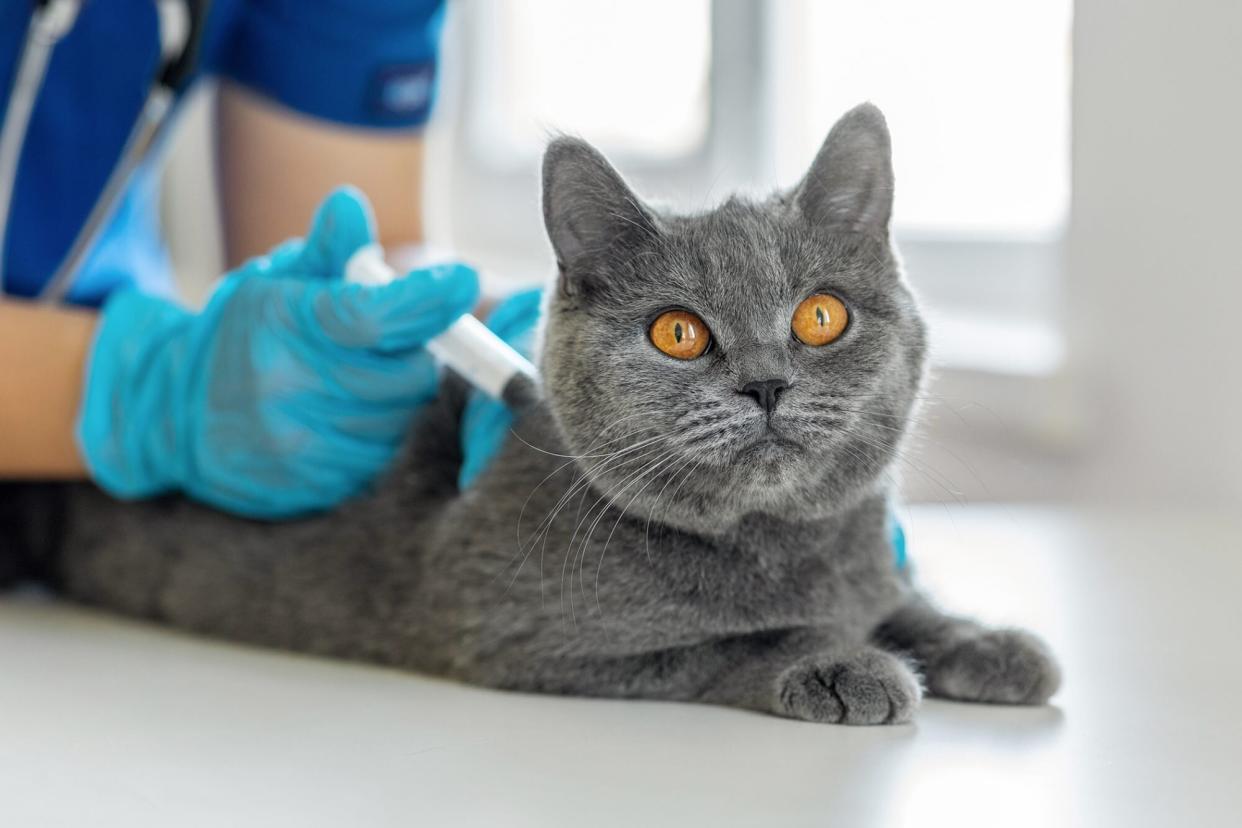What You Need to Know About Panleukopenia in Cats (aka Feline Distemper or Parvo)

bymuratdeniz / Getty
TABLE OF CONTENTS
On This Page
What Is Feline Panleukopenia?
Signs and Symptoms
Treatment
Vaccination
It's possible that you've never heard about feline panleukopenia, or perhaps you know it by its other names: feline distemper, feline infectious enteritis, and feline parvo. It's a common and extremely serious disease, but it's preventable through a vaccine.
A former president of the American Association of Feline Practitioners and a member of Vet Scoop, Lauren Demos, BVMS, MRCVS, tells Daily Paws that while the vaccine can prevent the loss of white blood cells, the virus can still spread easily. It's especially dangerous to unvaccinated kittens.
We also spoke with Rachael Wooten, DVM, the chief veterinarian at One Tail at a Time Animal Rescue. "Feline distemper (aka feline panleukopenia) is a highly contagious and life-threatening viral infection caused by parvovirus," Wooten says.
Here's all you need to know about recognizing, treating, and preventing panleukopenia (aka feline parvo or distemper in cats).
What Is Feline Panleukopenia?
Feline panleukopenia is the medical term for when your cat has a low count of white blood cells, Demos says. White blood cells are what protect your cat's bloodstream from diseases and infections, so a cat with a low white blood cell count will be more susceptible to illnesses.
"White blood cells are important because they are the cells used to fight off infections in the body," Wooten explains. "Without them, the cat, unfortunately, has a very weak immune system."
Panleukopenia is caused by a virus, namely the feline parvovirus, according to the American Veterinary Medical Association. "It infects and kills cells that are rapidly growing and dividing, such as those in the bone marrow, intestines, and the developing fetus," states the AVMA. The virus is "hardy," meaning it can survive for quite a while, Demos says.
It should be noted that the feline parvovirus is not quite the same as the canine parvovirus. The viruses are species-specific and are not passed to one another. So while cats can get parvo, it will be a bit different from the dog version. But like canine parvo, it's highly contagious.
A cat will spread the virus through anything expelled from her body, namely her feces. From there, it can hitch a ride on anything that touches the poop, whether that's a shoe, clothes, or a paw.
Kittens are most at risk for the disease, especially if they contract it before they have a chance to get the vaccine (more on that later). That's why you should know about it if you adopt a stray or feral cat. However, senior cats can be susceptible, too, Demos says.
According to the AVMA, nearly all cats are exposed to the virus at some point in their lives.
RELATED: Why the Rabies Vaccine for Cats Is So Important for Both You and Your Feline Friend
Signs and Symptoms of Panleukopenia in Cats
There are several things to look out for if you suspect your cat has feline panleukopenia, according to Demos, Wooten, and the AVMA, including:
Those are by no means symptoms specific to panleukopenia, so your veterinarian will have to conduct a blood test and then determine whether the feline parvovirus is present in your cat's stool, the AVMA says. However, your vet might suspect panleukopenia if they know whether your cat has been vaccinated or if she's come into contact with another cat who might have the virus.
Feline Panleukopenia Treatment Options
"There is no straightforward 'cure' for feline distemper, but luckily there is a vaccine that is super effective, Wooten says. "Prevention is the key to managing and preventing this terrible virus."
The sad reality is that once you notice that your cat or kitten is sick, treatment options are limited. "If a kitten or cat tests positive for feline distemper, then their symptoms can be treated to help them as the virus runs its course, typically around 10-14 days," Wooten says. "The treatment typically involves aggressive IV fluid therapy, IV antibiotics, and anti-nausea medication."
Demos says veterinarians will treat sick cats to give them supportive care, but because there's no cure, the mortality rate is fairly high. Without supportive care, about 90 percent of cats with feline panleukopenia will die, according to the AVMA. So treatment can make a difference!
That's why you should contact your vet as soon as you suspect your cat might have panleukopenia.
RELATED: How Much Do Cat Vaccinations Cost? Here's What to Know
The Feline Panleukopenia Vaccine
There is good news here, though: There are vaccines for distemper in cats that can prevent the disease. More good news: The vaccines are usually included in your kitten's core set of vaccines she gets at 8, 12, and 16 weeks old, Demos says. It's the "P" in the FVRCP vaccine.
"Vaccinate your kittens and cats!" stresses Wooten. "In the animal shelter I work in, I have personally seen the vaccine save so many lives, whether the kitten never contracted the virus, or because they had at least one vaccine, they had a milder case of feline distemper."

